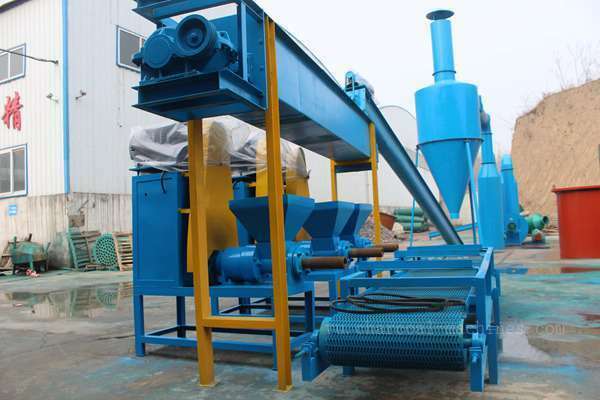The high-quality charcoal briquette production line requires four stages of mechanical charcoal from raw material to final product.
First, the crushing stage
Not all wood blocks are suitable for making charcoal. If the wood blocks are to be processed into charcoal, they must be crushed. Only the crushed wood blocks can produce good quality charcoal. It is generally necessary to pulverize the wood into pieces having a width of about 3-5 mm.

Second, the drying stage.
The temperature at this stage is 120-150 degrees Celsius, and the pyrolysis rate is very slow. The main reason is that the moisture in the wood evaporates when it relies on externally supplied heat, and the chemical composition of the wood material hardly changes.
Third, the rod making stage.
At this stage, we can make charcoal of different shapes according to our own ideas. This stage is very important. Because the shape of charcoal you make may affect the quality of charcoal. The temperature at which the rod is made generally exceeds 38 degrees Celsius.
Fourth, the carbonization stage.
The initial stage temperature is 150-275 degrees Celsius, the pyrolysis reaction of wood materials is obvious, and the chemical composition of wood materials begins to change. The unstable combination components, such as semi-fibers, decompose to form carbon dioxide, carbon monoxide and a small amount of acetic acid.
Then the temperature is controlled at about 275-400 degrees Celsius. In this stage, the wood material is thermally decomposed sharply to produce a large amount of decomposition products. The liquid product produced contains a large amount of acetic acid, alcohol and hibiscus oil. The water content of the generated gas gradually increases. The reduction, while methane, has been fading, and the gas is gradually getting more and more. This stage releases a large amount of heat of reaction, so it is also called the exothermic reaction stage.
Thereafter, the temperature rises to 450-500 degrees Celsius. At this stage, the charcoal is calcined by externally supplied heat, the volatile matter remaining in the charcoal is discharged, and the fixed carbon content of the charcoal is increased, and the liquid product is rarely formed.
Finally, it is smelted at a temperature of 500-1200 degrees Celsius. Eventually become high quality charcoal
